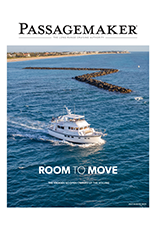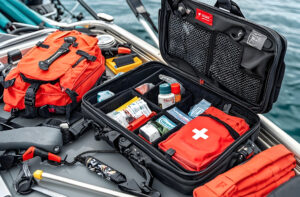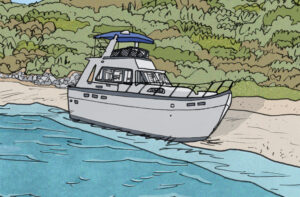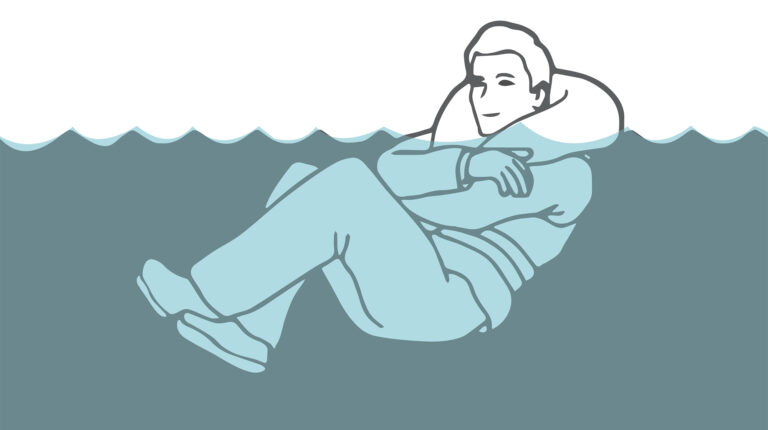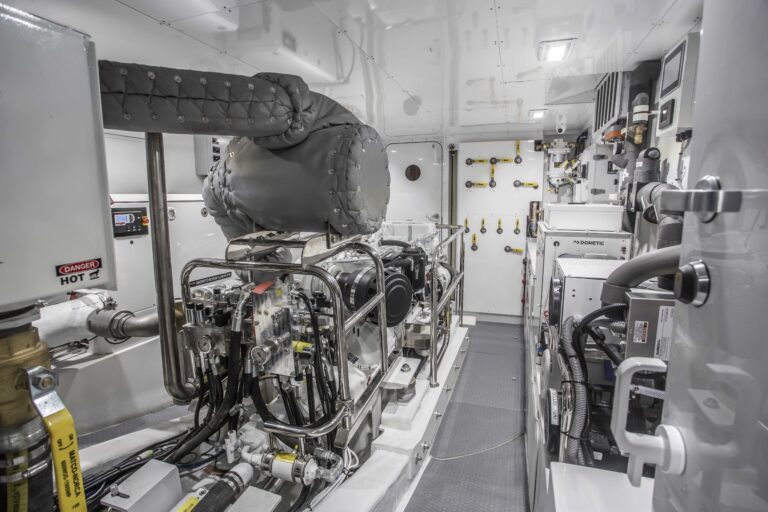Handling Tsunamis At Sea
We’ve got a question about tsunamis. Here’s the background: We were on board during the tsunami scare after the earthquake that struck Chile in late February. We were in San Carlos, in the state of Sonora, Mexico, securely tied to a slip in the marina. We were under a tsunami watch that covered the entire Pacific Coast of Mexico and into the Sea of Cortez.
There was some conversation on the VHF about tactics: should we leave the slip and head out to sea, or seek high ground that was only a few feet away? During the debate, one cruiser announced over the radio that a 4-meter-high (over 13 feet) tsunami had just struck Acapulco—a few hundred miles south of our location—and was headed our way. This nearly triggered a panic among those listening, and several folks began warming up their engines for a quick escape. Many of us doubted the veracity of the report, and it turned out to be completely incorrect. When the “tsunami” struck, it was about 6 inches high—hardly noticeable.
The debate, however, continued. We know the prevailing wisdom is to head out to sea where the tsunami has yet to form, but we felt that it would be much safer to head to high ground and let the boat take care of herself. (We were definitely in the minority.) We had our doubts about going to sea, as there appeared to be many variables (depth of water, bottom configuration, land mass formations, and so on), and the high ground was a sure thing.
Here are our questions: What information do we need to have before making the decision to head out to sea during a tsunami watch? How far from shore must we be to be safe? Are there any other issues that we must consider before making the decision to head out? Thanks for your help.
Tom and Judy Blandford
M/V Imagine Me and You
San Carlos, Mexico
First, let’s discuss what a tsunami is. Often, tsunamis are incorrectly referred to as tidal waves. They are actually a series of waves produced by earthquakes or underwater landslides and can travel at speeds averaging 450mph (and up to 600mph) in the open ocean.
If you are on your boat in the open ocean, you will not feel a tsunami, because the wavelength is hundreds of miles long and the amplitude only a few feet. This also makes tsunamis unnoticeable from the air. As the waves approach a coastal region, their speed decreases and their amplitude increases. Unusual wave heights have been known to be more than 100 feet high. However, waves that are only 10–20 feet high can be very destructive and can cause many deaths and injuries.
Tsunami waves travel outward in all directions from the spot where the tsunami is generated, much like ripples caused by throwing a rock into a pond. As these waves approach coastal areas, the time between successive wave crests varies from five to 90 minutes. Mariners need to respond in accordance with the local geographic conditions, including exposure to the open sea and bottom topography.
A 7.0-magnitude earthquake that occurs in a distant location will likely be followed by a tsunami watch. If you are aboard your boat in an area that is under a tsunami watch, there is usually enough time to head out to sea in a deep-ocean environment for minimal impact. A tsunami warning is issued if the earthquake is local—for example, an undersea earthquake generated off the Washington and Oregon coasts, from the Cascadia subduction zone. If you feel violent shaking for several minutes, head for higher ground immediately. There is likely not enough time to head out to sea and get deep water under your keel. The earthquake is your warning!
For a distant earthquake, the area that is included in the tsunami watch is based on the magnitude of the quake. For earthquakes over magnitude 7.0, the watch area is one hour of tsunami travel time outside the warning zone. For earthquakes over magnitude 7.5, the watch area is three hours of tsunami travel time outside the warning zone. The watch will either be upgraded to a warning in subsequent bulletins or will be canceled, depending on the severity of the tsunami.
Note that a tsunami warning indicates that a tsunami is imminent. The initial warning typically is based on seismic information alone. Earthquakes over magnitude 7.0 trigger a warning covering coastal regions within two hours’ tsunami travel time from the epicenter. When the magnitude is greater than 7.5, the warned area is increased to three hours’ tsunami travel time. As water-level data showing the tsunami are recorded, the warning will be canceled, restricted, expanded incrementally, or, in the event of a major tsunami, expanded. If you are in U.S. territorial waters, be sure to monitor NOAA Weather Radio. If you are outside continental U.S. territorial waters, visit the website of the International Tsunami Information Center (http://www.prh.noaa.gov/itic/), which covers 25 member nations in the Pacific Basin.—Lee S. Chesneau, Lee Chesneau’s Marine Weather (www.marineweatherbylee.com)
